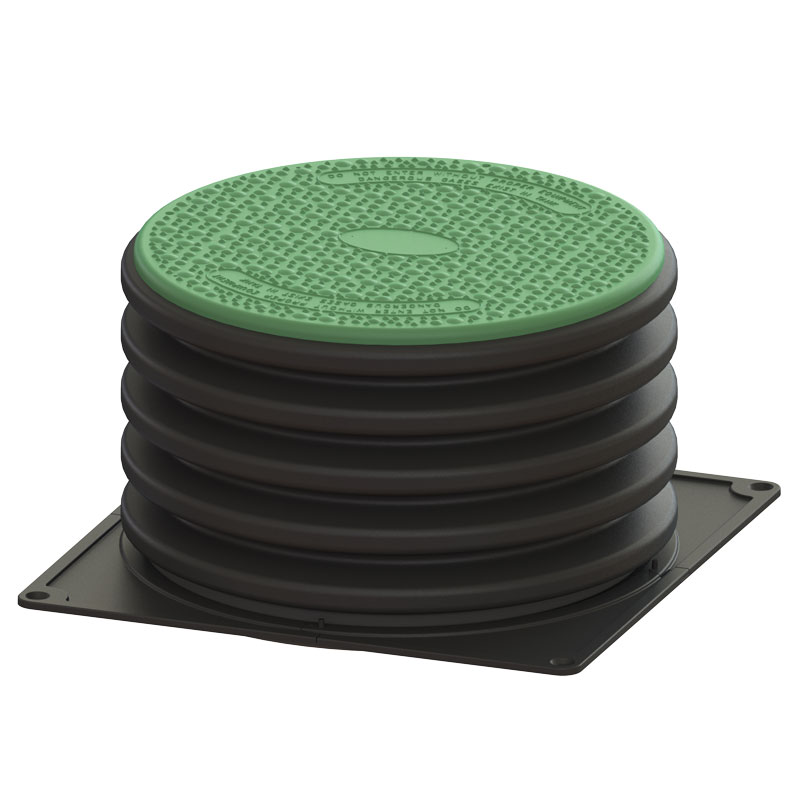How a septic system works
SEPTIC TANK SYSTEM FAILURE – WHAT HAPPENED?
The Maturing of the Bio-Mat

Purpose of the Septic Tank System
The purpose of a septic system is to bio-chemically treat wastewater and disperse the wastewater back into the environment while creating minimal environmental issues. The basic design and process has been consistent for hundreds of years. The two main parts of a septic system are the septic tank and the effluent dispersal module (more commonly known as a drain field, mound, or seepage pit).
The Septic Tank
The septic tank is a large capacity vessel typically constructed of concrete, plastic, fiberglass or steel. The purpose of the septic tank is to hold the wastewater for a period of time so the bio-chemical process can separate the solids from the liquids and breakdown the organic material. By definition, a septic tank utilizes an anaerobic process (lacking oxygen). During the bio-chemical process, the solids settle to the bottom of the tank (solids layer) and the grease, fats and oils float to the top of the water (scum layer). In between these layers is what is called the clear zone. The clear zone contains water with microscopic organic material and anaerobic bacteria.
As mentioned, the purpose of the septic tank is to hold the wastewater. Technically, the wastewater is always moving through the tank anytime wastewater is put down the drain in the dwelling. For example, when a toilet is flushed, 1.6 gallons of wastewater flows into the septic tank. This water raises the water level in the tank a fraction of an inch. This causes the water level to rise above the bottom of the outlet pipe and a slow trickle of wastewater flows towards the dispersal module until the 1.6 gallons exits the tank. This process repeats itself every time water flows down the drain of the dwelling.
The septic tank capacity is sized so it is at least 2 times the daily flow rate from the dwelling. For example if the daily flow rate is 500 gallons per day, the tank capacity should be at least 1,000 gallons. By this example, you can see that the more water that is used daily, the shorter the hold time in the tank. The shorter the hold time, the less time the bio-chemical process has to breakdown the organic material and the stronger the wastewater is flowing to the dispersal module. The anaerobic bio-chemical process reduces the strength of the wastewater between 30% – 50% in the ideal condition. When the system is overloaded hydraulically the reduction in effluent strength can be minimal to the point of allowing raw sewage into the dispersal module.
The Dispersal Module Design – Drain Field
There are many designs for the dispersal module. The most common design is the drainfield, also known as a trench or finger system. The name “finger” system best describes the design. As you extend your arm and hand horizontally you can visualize the design. Your arm is the pipe coming from the septic tank, your palm is the distribution box, and your fingers are the perforated pipe through which the wastewater flows to be spread evenly below the surface. Generally speaking, the fingers or laterals are made of plastic pipe or tubing that is perforated. As the wastewater passes through the pipe it is able to pass through the openings and be absorbed into the ground. Most systems have a distribution box between the laterals and the pipe coming from the septic tank. The purpose of the distribution box is to allow for a connecting multiple laterals to the pipe coming from the septic tank. Some distribution boxes have features that allow for flow adjustment and balancing between the laterals.
The Dispersal Module Design – Mound
Another variation of the dispersal module is the elevated sand mound or drip systems. The mound system is nearly identical to the drainfield with the exception that it is constructed on the surface of the ground and covered with soil as compared to digging and installing the system below grade. Most systems flow from the septic tank to the dispersal module by gravity. Depending on the system design and site conditions, some systems will deliver the wastewater to the dispersal module by pump.
Purpose of the Dispersal Module
The dispersal module has two purposes. First, the module further treats the wastewater reducing the strength. Second, the module disperses the wastewater into the ground where it flows downward and eventually mixes with the groundwater. The design goal of the entire septic system is to remove the harmful waste products and pathogens before the wastewater mixes with the ground water. As stated, a 30% – 50% reduction in wastes and pathogens occurs in the septic tank. This leaves the dispersal module to reduce the balance of the wastes and pathogen 50% – 70%. Some of this reduction is performed by the anaerobic bacteria that flow from the septic tank to the bottom of the dispersal module.
The Biomat
In a short period of time, the anaerobic bacteria together with the mucus that it secretes forms a layer called a biomat. The biomat is a living organism that digests the wastes and pathogens. The mucus secreted by the anaerobic bacteria is a black sludge looking material that is semi-impermeable and therefore slows the flow rate of the wastewater from the module. Any waste and pathogens that are not consumed by the biomat are consumed by the naturally occurring aerobic soil bacteria. In theory, the soil bacteria digest the biomat from the outside in to control the permeability of the biomat.
How a Septic System Fails
A septic system can fail by two methods: a mechanical failure of a component or biologically. The systems installed in the past 30 years are made from durable materials. Prior to then, some components were marginally durable by today’s standards. Many times these failed components can be upgraded to more modern materials.
Mechanical Failures
Most septic tank designs are very durable and seldom need replacement. The typical failure mode of a tank is caused by corrosion. Plastic and fiberglass tanks are not susceptible to corrosion unlike concrete and steel. The concrete tanks can deteriorate from exposure to the hydrogen sulfide gas (rotten egg odor) produced by the anaerobic bio-chemical process. Steel tanks can rust from two sources, the hydrogen sulfide gas and general oxidation. If the tank is manufactured using industry standard materials a mechanical failure is not likely.
Mechanical failures are generally caused by human error such as crushing or collapsing the tank with heavy equipment or improper installation. The pipe system to and from the tank is also very durable. While durable, cast iron pipes can be problematic because of corrosion. The inlet and outlet pipes can be damaged through crushing with heavy equipment. The pipes can also fracture if the soil below and adjacent to the tank was not properly compacted during installation; however, this is the exception.
Biological Failures
More likely, a septic system is going to fail biologically. As described above, the maturing of the biomat is the number one cause of septic system failure. By design, the biomat will grow at the infiltrative surface of the dispersal module. Theoretically, the natural aerobic soil bacteria will keep the biomat permeable enough for the system to function. This theory is correct for a finite period of time. On average the biomat will mature into a non-permeable layer in about 15 – 20 years of service.
When the biomat is no longer permeable the dispersal module is considered failed and the problem needs to be addressed. The range of service life is wide, anywhere from 5 years to 60 years. The service life is definitely influence by many factors such as soil types, climate, installation techniques, abuse, and proper maintenance.
When septic system failure occurs, the conventional solution is to replace the dispersal module through excavation. While this solution is effective for a finite time period, the replacement module will fail again within 5 – 40 years. The science based solution to restoring dispersal modules is conversion of the bio-chemical process to an aerobic environment by installing the Septic System Saver® Unit!

SEPTIC TANK RISER KITS
Bring your septic cover to the surface so it is easy to service the tank. A septic tank riser kit makes installation of Septic System Saver even easier!
